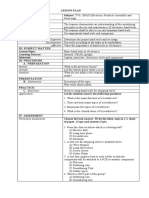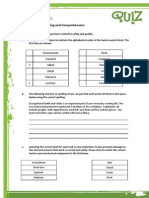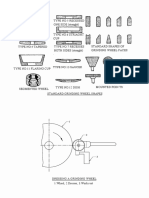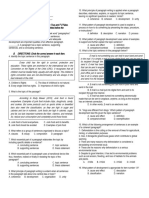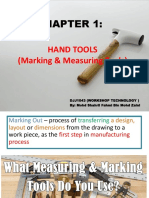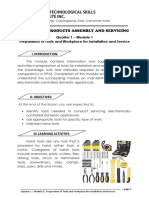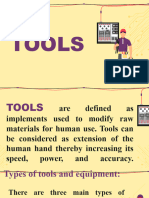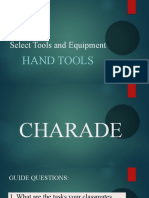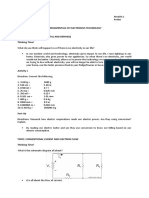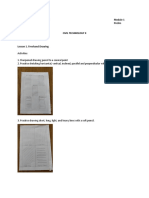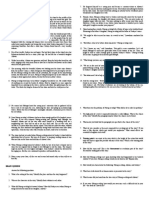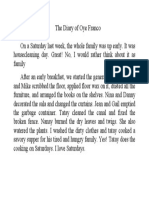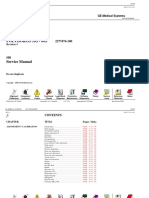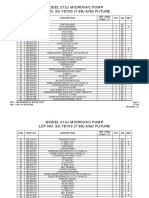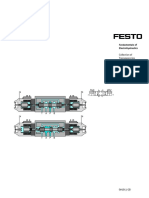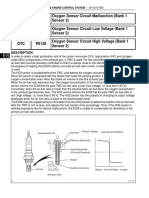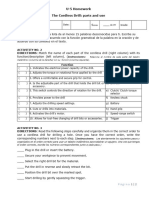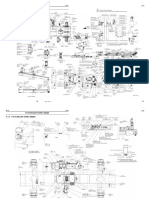0% found this document useful (0 votes)
298 views5 pagesMetal Works Pre-Test and Tool Guide
This document provides information about a pre-test for a metal works course, including matching and multiple choice questions. It also asks the student to provide functions of various tools, including vice grips, devil's clamps, combination pliers, flat screwdrivers, and open wrenches. Finally, it asks the student to provide at least 10 tips for maintaining hand tools, such as proper storage, cleaning tools often, regularly inspecting tools, keeping tools lubricated, sharpening bits, replacing worn parts, letting tools cool down, and storing tools properly.
Uploaded by
KaiRae AsakuraCopyright
© © All Rights Reserved
We take content rights seriously. If you suspect this is your content, claim it here.
Available Formats
Download as DOCX, PDF, TXT or read online on Scribd
0% found this document useful (0 votes)
298 views5 pagesMetal Works Pre-Test and Tool Guide
This document provides information about a pre-test for a metal works course, including matching and multiple choice questions. It also asks the student to provide functions of various tools, including vice grips, devil's clamps, combination pliers, flat screwdrivers, and open wrenches. Finally, it asks the student to provide at least 10 tips for maintaining hand tools, such as proper storage, cleaning tools often, regularly inspecting tools, keeping tools lubricated, sharpening bits, replacing worn parts, letting tools cool down, and storing tools properly.
Uploaded by
KaiRae AsakuraCopyright
© © All Rights Reserved
We take content rights seriously. If you suspect this is your content, claim it here.
Available Formats
Download as DOCX, PDF, TXT or read online on Scribd
/ 5

